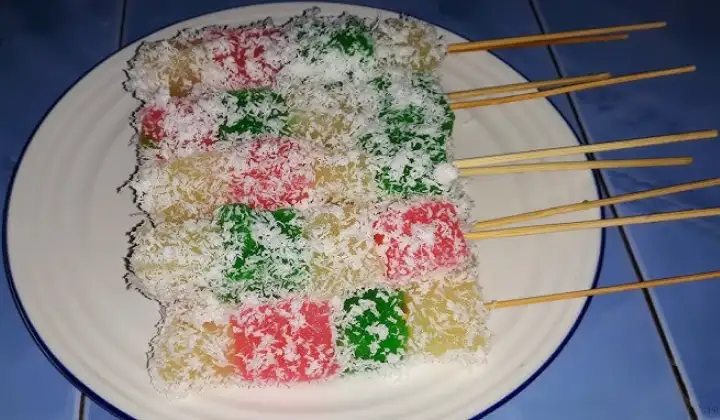If you’re a fan of exploring unique flavors and cultural delicacies, cenil is a must-try. This traditional Indonesian snack is a favorite among food enthusiasts for its vibrant colors, chewy texture, and sweet taste. Whether you’re curious about its history, ingredients, or recipes, this article covers all you need to know about cenil.
What Is Cenil?
Cenil is a traditional Indonesian dessert made from cassava flour mixed with tapioca or glutinous rice flour. Known for its vibrant colors and chewy texture, cenil is typically served alongside other snacks like lupis or serabi. It is often coated with freshly grated coconut and drizzled with palm sugar syrup, creating an irresistible combination of flavors.
This snack is a representation of Indonesia’s rich culinary heritage, often sold in traditional markets or enjoyed at festive events. Cenil’s soft texture and sweet aroma make it a beloved treat among Indonesians of all ages.
How to Make Cenil: A Step-by-Step Recipe

Rainbow Cenil Recipe
Ingredients
- 100 grams tapioca flour
- 100 grams low-protein wheat flour
- ½ teaspoon salt
- ¼ teaspoon vanilla powder
- 130 –150 ml hot water
- Food coloring pink and green
- Pandan leaves for boiling
- Grated coconut mixed with a pinch of salt steamed briefly
- Palm sugar syrup
Instructions
- Mix the dry ingredients (tapioca flour, wheat flour, salt, and vanilla). Gradually add hot water while kneading until smooth.
- Divide the dough into two parts and add pink food coloring to one and green to the other.
- Shape the dough into small, elongated pieces or other desired shapes.
- Boil water with pandan leaves and cook the cenil until it floats to the surface.
- Drain the cenil and coat it with grated coconut. Serve with a drizzle of palm sugar syrup for a delightful finish.
Where to Find Cenil?
Cenil is widely available in traditional Indonesian markets and street food stalls. It is often sold as part of a selection of traditional snacks, making it easy to enjoy with lupis or serabi. If you’re abroad and craving cenil, you can also find recipes online or buy the necessary ingredients to make it at home.
Explore more Southeast Asian sweets with our guide to traditional and modern Filipino desserts.
Cultural Significance of Cenil
Cenil is more than just a snack; it’s a piece of Indonesia’s culinary identity. Its bright colors symbolize joy and celebration, making it a popular choice during festive occasions. Families often pass down cenil recipes through generations, keeping its cultural legacy alive.
FAQs About Cenil
1. What Makes Cenil So Chewy?
The combination of tapioca and glutinous rice flour gives cenil its signature chewy texture. Cooking the dough in boiling water further enhances its elasticity.
2. Can Cenil Be Stored for Later?
Yes, but cenil is best consumed fresh. If you need to store it, keep it in an airtight container in the refrigerator and reheat with grated coconut before serving.
3. Are There Variations of Cenil?
Absolutely! You can experiment with different food colorings or add natural flavors like pandan or cocoa powder to create unique versions of cenil.
Experience Cenil at Home
Making cenil is a fun and rewarding experience that brings a taste of Indonesia to your kitchen. Its delightful texture and rich flavors make it an ideal dessert for any occasion. Whether you’re savoring cenil for the first time or revisiting a childhood favorite, this snack promises a nostalgic and delicious journey into Indonesia’s culinary heritage.
Enjoy the colorful, chewy world of cenil today and share its magic with your friends and family!
